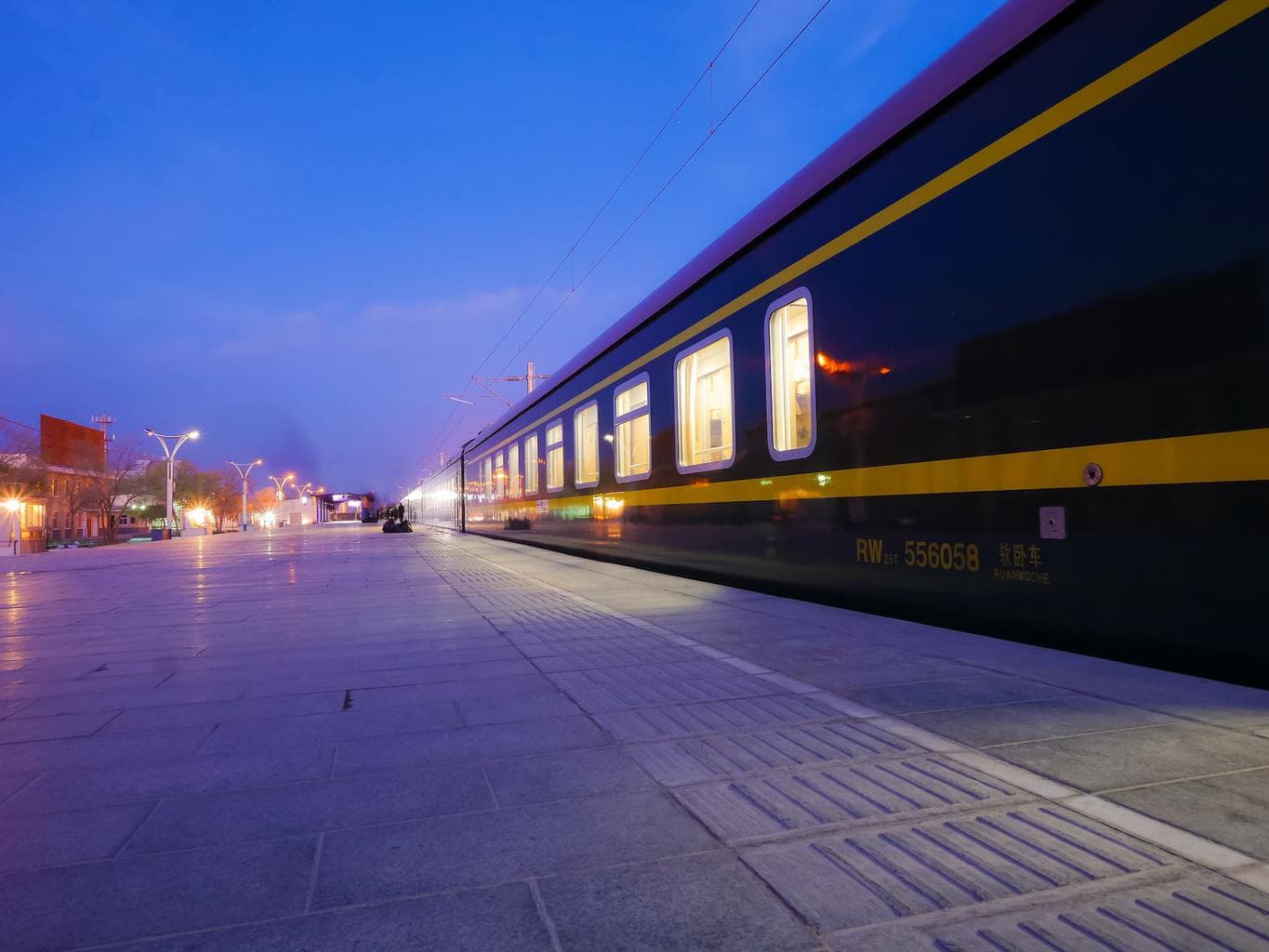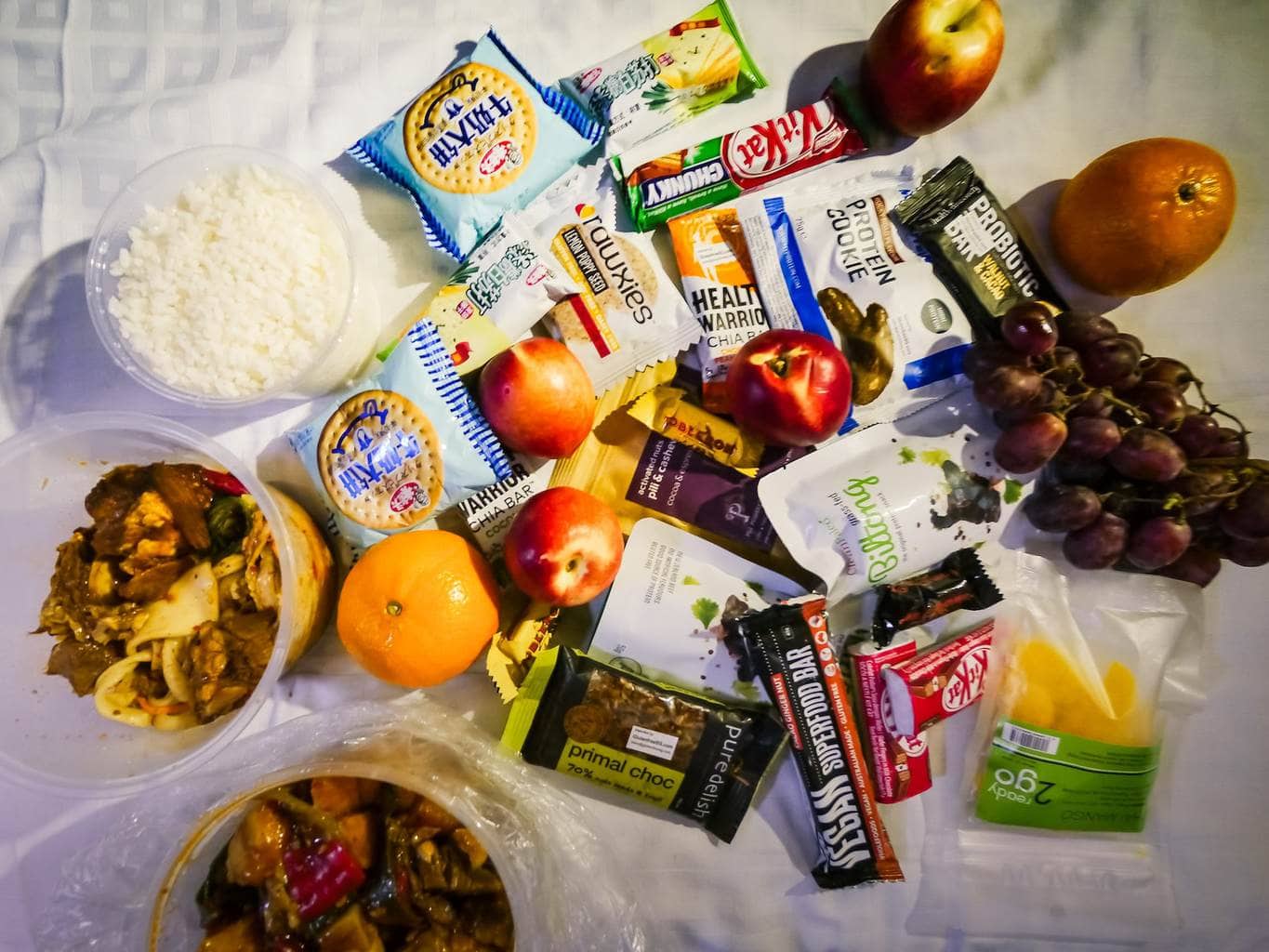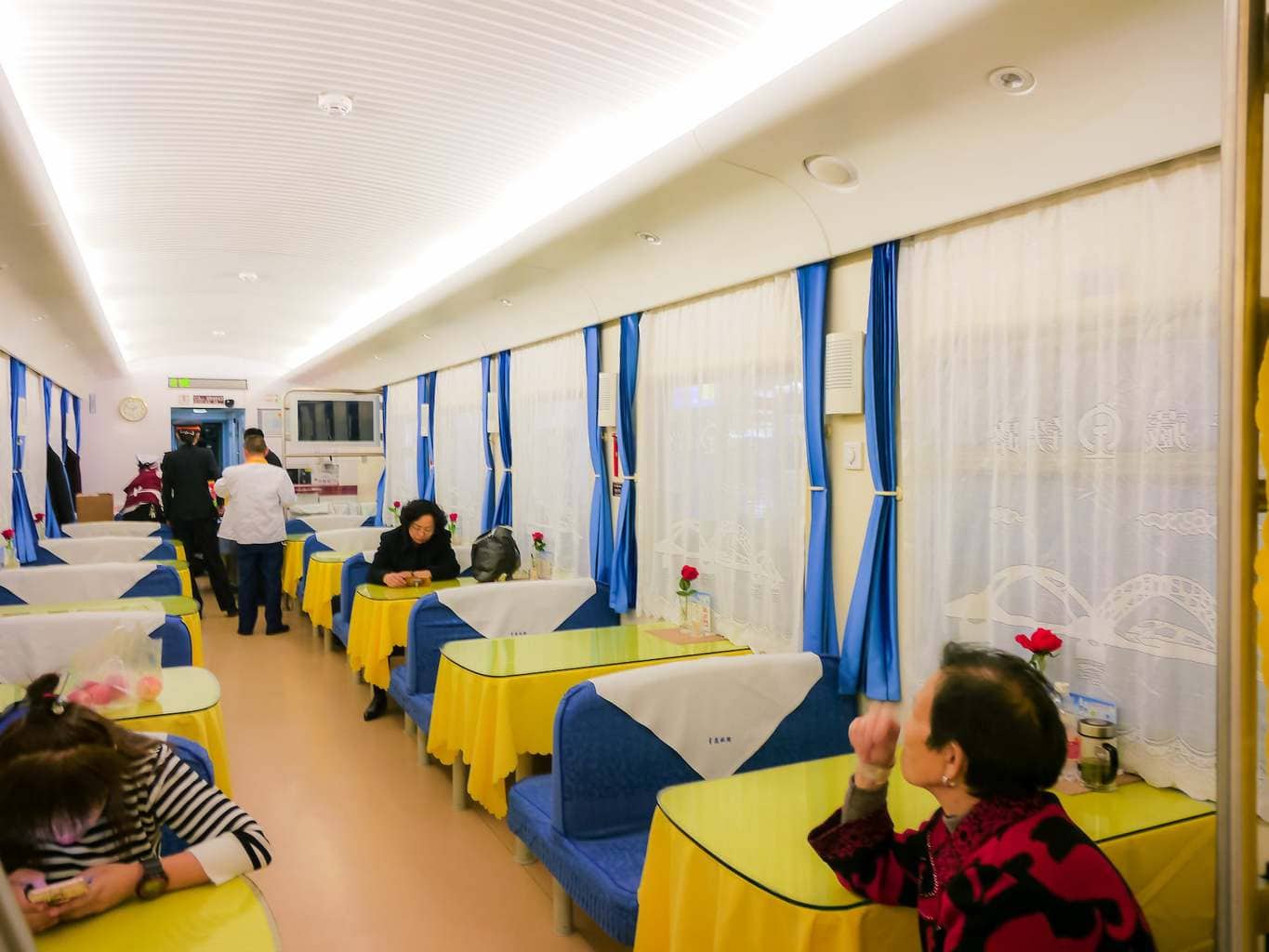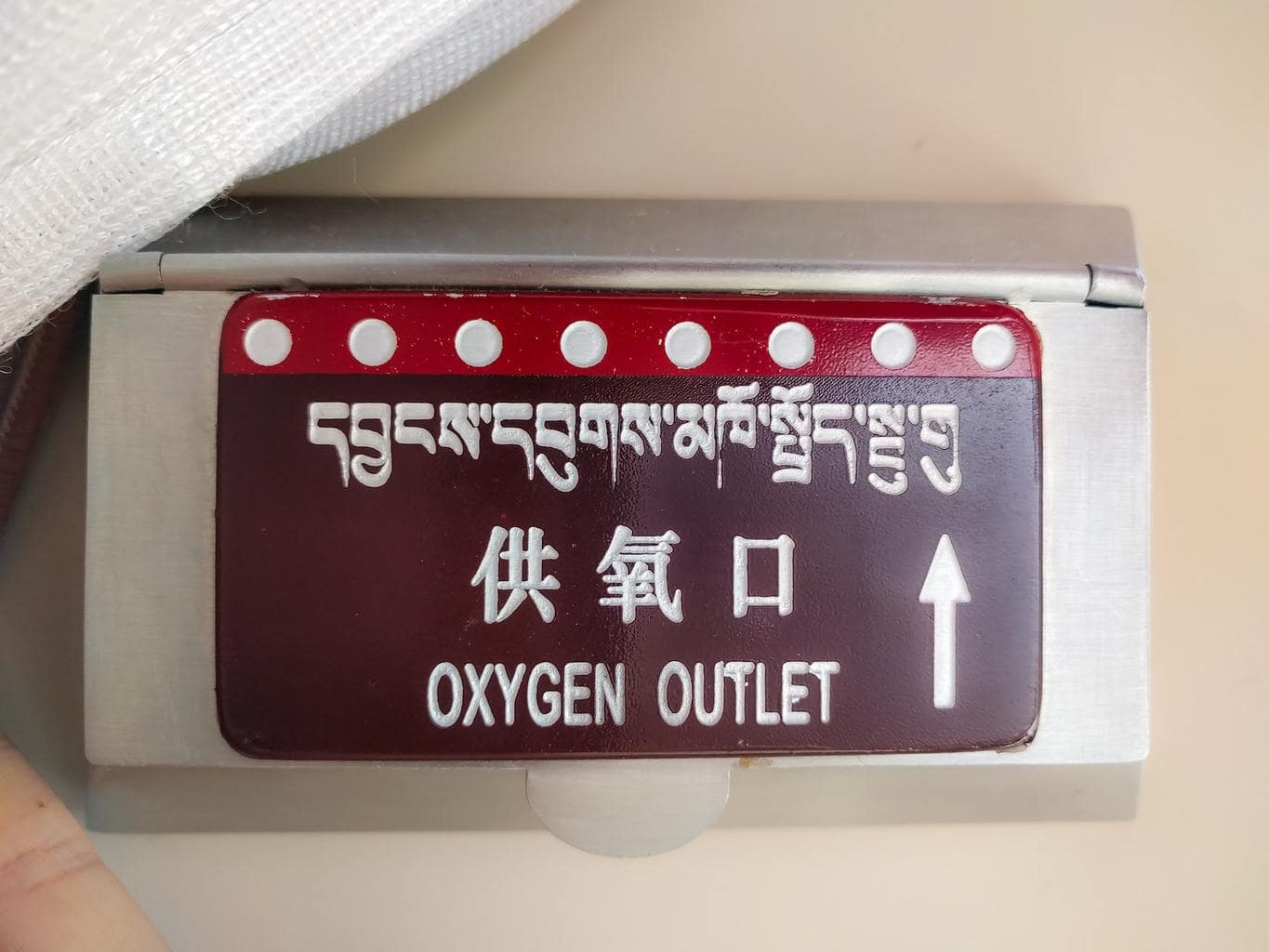
Taking the train to Lhasa has always been one of my bucket list items. Partially because travel to Tibet was on the list, but also because I love train travel. Since the railway line to Lhasa known as the Qinghai-Tibet Railway opened in 2006 the number of tourists arriving in the Tibetan capital has increased and travel to the Roof of the World has become more accessible.
Tibet is only reachable via a flight from other Chinese cities, most commonly Chengdu, or through the only international flight available, the half hour journey over the Himalayas to Nepal. Train travel has brought the prices down and allowed the journey to be more affordable for the local Chinese and Tibetans. Trains to Lhasa can carry up to 1,000 passengers in one go during the peak season.
The journey on the train to Lhasa
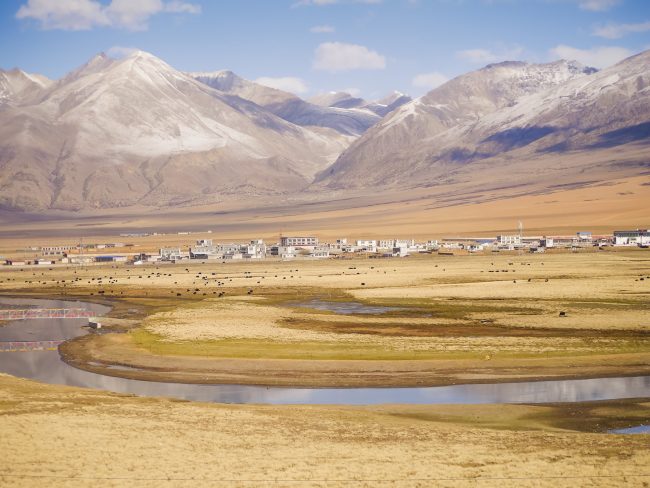
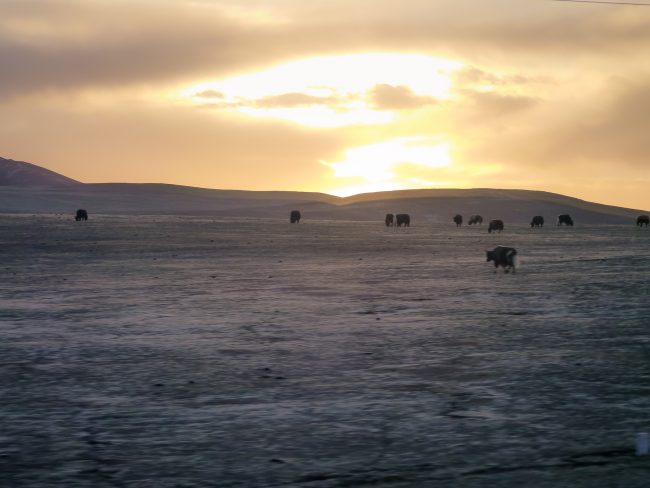
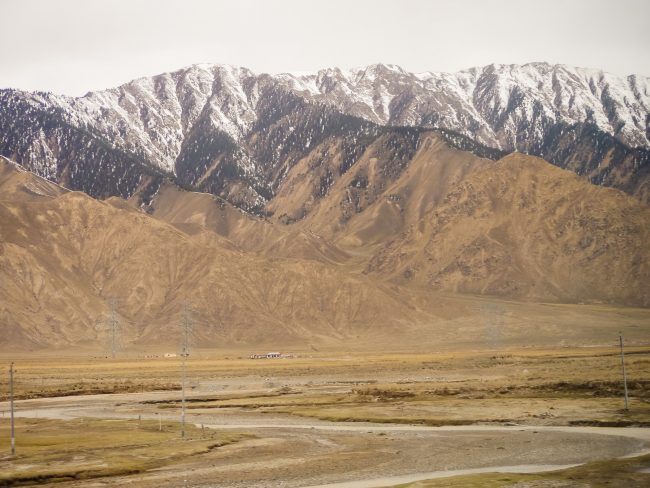
The train departs from Beijing and makes the entire journey over 40h crossing eight Chinese provinces and covering 3,757km. Although you can buy tickets to go all the way, most people board at Xining, half way, as the landscapes from Beijing to Xining are not as interesting and spending that long in a train seat, especially in the lower categories, is not so pleasant.
I flew to Xining from Chengdu and then took the train for the last 21h until Lhasa. During the summer months there may be up to three trains per day stopping in Xining, two around early afternoon and one in the evening. But the schedule changes every day and month so it is best to confirm in advance.
Because the train journey is so popular with tourists in the warmer months, prices are affected by the forces of supply and demand (or by the bribes, depending how you look at it) and so you may pay more than the official price for a soft sleeper.
Much longer than some other trains I have taken like the Glacier Express in Switzerland, there are 45 stations between Xining and Lhasa but our train only stopped at nine, mostly during the night. At every stop, some passengers would board and others would disembark. The stations were bare and we only got out at the one that seemed to be the longest stop where we even managed to snap a twilight photo of the train.
There are no announcements of the arrival or departure from stations and no information as to how long the stop will be so be careful not to get left behind, especially if you stop at one of the high altitude and colder places and get out in your regular clothes. On the longer stops, you may have time to buy some food and snacks from the platform vendors.
Through the window the landscapes changed dramatically. We saw grasslands with farmers and herders caring for large herds of goats, sheep and yak, deserts and arid mountains topped with snow and reflective lakes. After 21h everything blended into the Tibetan landscapes we would later see across the country.
The most stunning views were the lakes we reached when the sun started to rise in the horizon and we passed lower grasslands and herds of sleeping cows and yak. The cloudy sky reflected on the lake creating an almost perfect symmetry.
We were up before the sun started to pierce through the clouds and watched it struggle to penetrate the thick cover as lazy herds decided whether it was time for them to stand up too.
The train to Lhasa
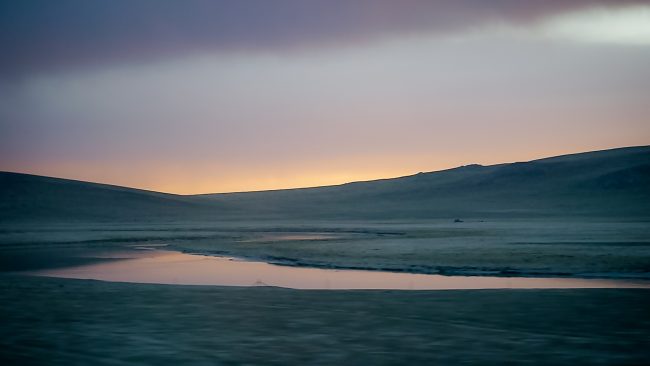
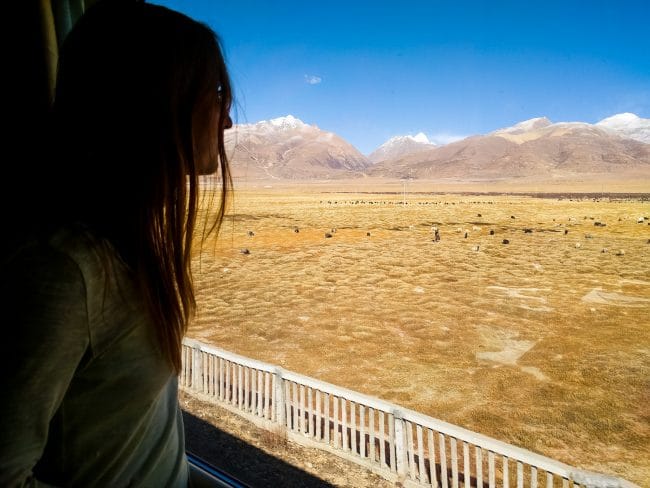
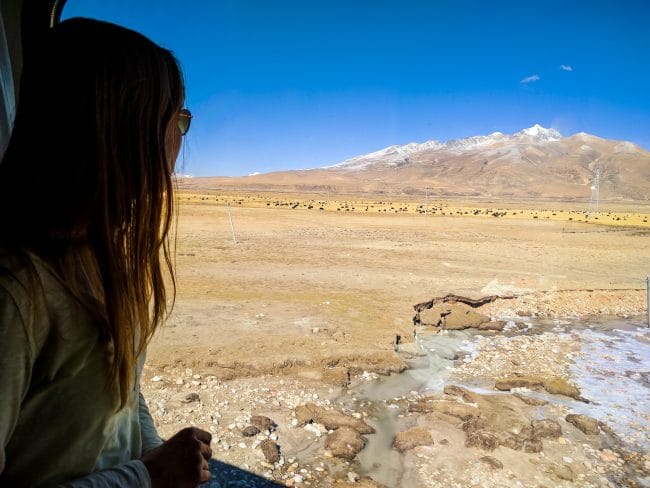
The train to Lhasa is one of the world’s greatest technological feats and it is full of superlatives. The world’s highest train track at Tanggula Pass when the track reaches 5,072m or the world’s highest railroad tunnel in Fenghuoshan at 4,905m are two of the great achievements. There are 675 bridges and about 80% of the journey is at altitudes above 4,000m which is why oxygen is provided both in the cabins when the train reaches Golmund, as well as through canisters in case of more extreme needs.
With altitude comes lower pressure and lower temperatures which needed to be considered when building the railroad. Around 50% of the tracks were laid over permafrost and the trains were designed to work even over ice where they can still reach a speed of 80km/h.
The oxygen level is being monitored in each train car and we were regularly going outside to check the elevation on the screens until the numbers were changed into Chinese and we could no longer read them.
Each train car had an attendant which could be called via the in-cabin button, much like in planes. They did not speak a word of English and we only interacted with them when the tickets needed to be checked twice, once upon departure and once close to arrival.
Seat categories
The train has three categories, from the soft sleeper we booked to the hard seats. The soft sleeper cabins have four beds stacked on two rows on each side with a table in the middle. They are very comfortable and come with pillows and thick duvets to keep warm and comfortable.
Although you can book just a bed, you may also book all the beds in the cabin and have it all to yourself. We were three and booked the entire cabin so that we could have complete privacy and comfort. The beds were spaced enough that we could perfectly sit or lay and relax. There was enough space under the beds for us to place all the suitcases so we did not feel crammed.
The hard sleeper cabins have six beds instead of four and the mattresses are therefore thinner and less comfortable. As you don’t have that much space to sit on the higher beds, all passengers in the cabin would be using the lower level bed during the day and only retiring at night. So your comfort would be more limited than in the soft sleeper. The top beds are only 60cm from the roof of the train so they are the least comfortable. The doors in the hard sleeper compartments cannot be locked.
The hard seats are simple seats in crowded train cars filled with people so they are definitely not the most comfortable options for such a long journey, plus your personal space and the amount and size of luggage you can bring are also limited. They offer the best cultural experience though as Tibetans are extremely friendly and will share their snacks and food with you and the conversations you can have, even with sign language, can make the journey incredibly fascinating.
Soft sleeper cabin beds
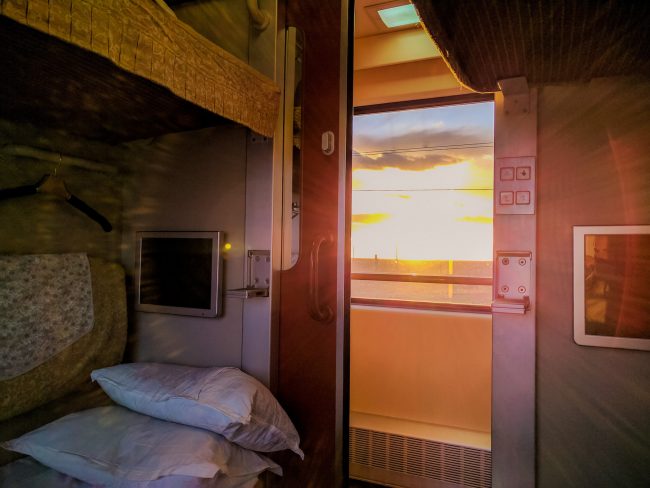
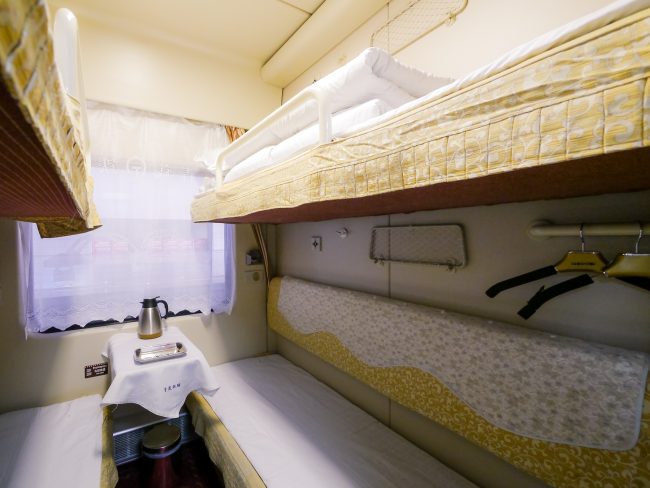
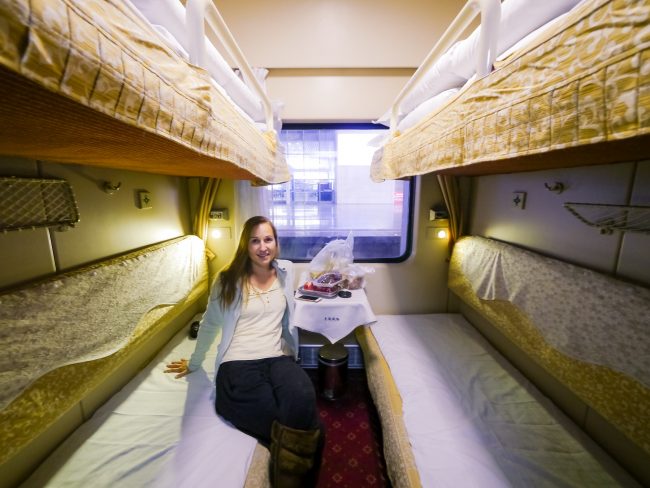
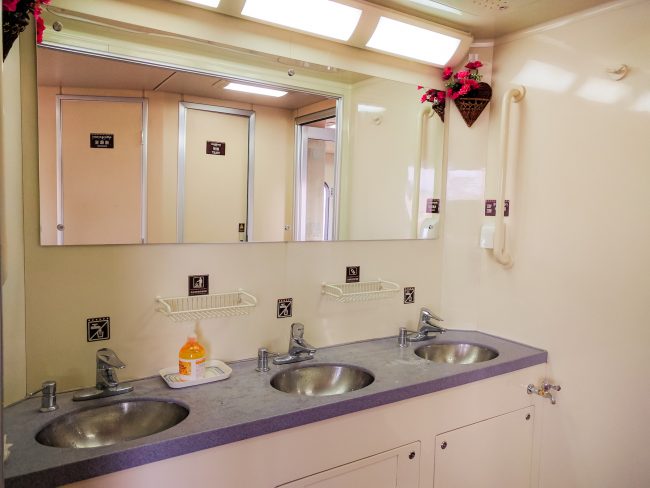
Soft sleeper beds are definitely the way to go as it makes the journey very pleasant and comfortable. There are only 64 seats on the soft sleeper category per train so they get sold out fast among tourists, particularly Westerners. The only other Westerners on my train (about 10 of them only in the 800+ passenger train) were all staying on Soft Sleeper compartments.
The cabins are well equipped and even have a socket to plug electronics. All the cabins come with oxygen outlets, one to each berth, which started to push oxygen as soon as we reached the higher altitudes. The train is clean and there are two toilets per car, one squat toilet and one Western toilet, both of which are regularly cleaned.
There are two longer stops on the journey during which the toilets are emptied and cleaned thoroughly. There are also three basins with water to wash in each car. Each bed comes with a pair of slippers which were very useful to wear outside the cabin as the floors were often wet from the water spilled by other guests. The cars and cabins were all heated and we were never cold.
Inside the cabins there are TV screens in every bed, but we did not find a way to turn them on or use them. The small table by the window is useful to place all smaller items and have them handy when you sleep. As the cabin doors can be locked, we had almost perfect privacy and peace.
In the corridor there are single pull-down seats you could use to look through the window and watch the day go by. When it is time to go to sleep you just need to get into comfortable clothes and cover with the duvets. The lack of blackout curtains does mean that you are woken up by the sunrise, but I was happy to as it provided the best views of the entire journey.
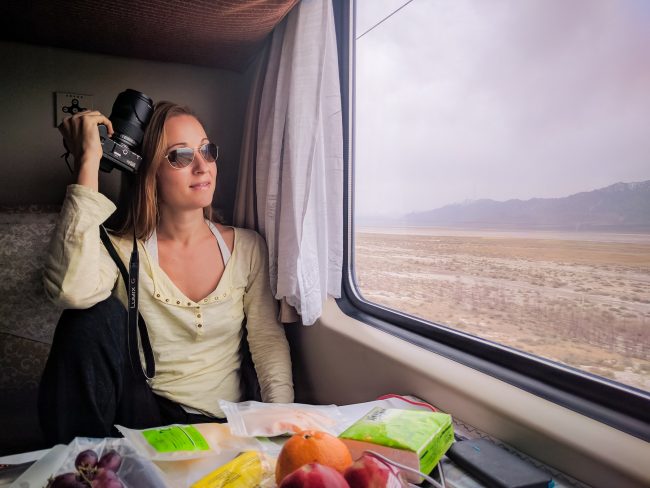
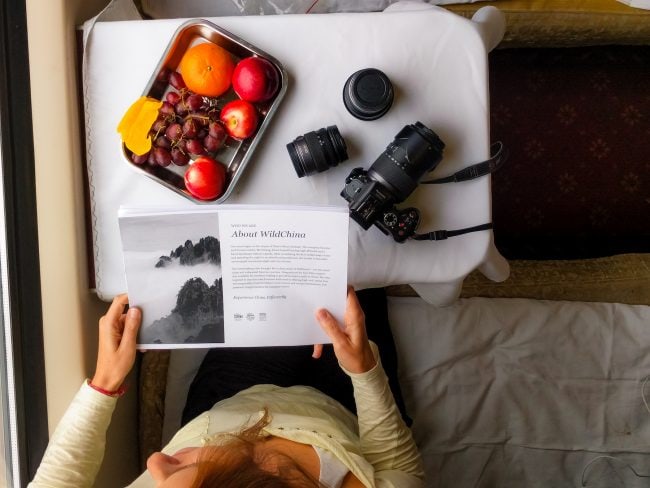
If you do not book the entire cabin you are best booking the lower beds because they are easier to access and have better views as they are next to the windows. However, chances are that the guests sleeping on the top beds spend their days sitting on the lower beds anyway so you may not have the bed all to yourself. This was the case in all the other cabins.
Soft sleeper seats are boarded through the manual-checking lines at Xining station so, after we got into the main building and were shown the departure gates for Lhasa we stood there until the doors were opened and the train staff checked our tickets.
Getting through the ticket controls at Xining station was chaotic with lots of people pushing and jumping queues. You need not worry to hurry up though and can wait for everyone to go through then board without the stress.
To get into Xining station we had to go through a similar luggage check as in an airport and our passport and Tibet permits were validated in a very formal way by the staff. Inside Xining station there is a small supermarket to buy snacks or fresh fruit, very convenient if you don’t want to hassle the train’s staff.
After the ticket check, boarding was easy as the cars were numbered. A staff member was standing at each car entrance checking the tickets once again. The soft sleeper cars are right next to the Dining car so you won’t have to walk the length of the train to get there.
Food and drinks on the train to Lhasa
We landed in Xining from Chengdu and had a few hours to spare before the train so our guide from WildChina took us for lunch in one of the traditional restaurants in town and we took the opportunity to order some additional food to take away for dinner.
We also brought snacks from home (chocolate and cereal bars, protein cookies, etc.) and bought some fresh fruit at Xining Station. We had enough water to last us the journey, about 3.5 liters for two people. It is fair to say we were very well stocked for the journey and the snacks lasted the entire trip through Tibet.
If you don’t want or cannot bring food with you, the train has a dining car and other food and drinks options available and buying some additional snacks at Xining station may also be a good idea.
The dining car is about half-way through the train next to the Soft Sleeper cars and serves hot food and drinks in three services: breakfast, lunch and dinner.
However, the menu is entirely in Chinese and the staff does not speak a word of English so unless you use Google Translate to read the menu and wish yourself some luck you may order something unpleasant, a common mistake I make in China where parts of animals I don’t usually eat are delicacies on the menu.
My friend Edwin ate at the dining car and thought the food was alright, if pricey for what you get, but it was certainly an experience. If you have dietary restrictions or allergies you should bring your own food to avoid misunderstandings. Bear in mind that the dining car is small, there are only 32 seats, and so getting a spot at mealtimes may be hard.
Alternatively, the staff will walk the lengths of the train several times throughout the journey pushing a food and drinks cart with instant noodles, fresh fruits and vegetables and other snacks to satisfy your cravings.
Perhaps the most common food brought on board are instant noodles and tea bags as there is an unlimited supply of hot water in every compartment and the soft sleeper cabins even had a kettle you could use to fill your cups. Anything that can be cooked with hot water is a great item to bring onboard. But carry your cup with you.
Acclimatisation on board
Aside from the views, most people take the train to Lhasa as a means to acclimatise to the Tibetan altitude. I was one of them. I love train travel and watching the world go by but I also thought the train would help us get used to the 3,650m in Lhasa. So, how useful is taking the train to Lhasa to acclimatize to the higher altitude? The short answer is that it is better than flying but not perfect. Here is why.
In order to reduce the risk of altitude sickness, travelers should ascend progressively, ideally at a rate of no more than 500m per night above 2,500m. That means that if you are traveling to Tibet from sea level, you should allow for 3-4 days at intermediate altitudes before reaching Lhasa.
The train from Xining starts at about that altitude of 2,285m and gets to Lhasa at 3,650m a day later, covering over 1,300m in a day, so that is still too fast to prevent the risk of altitude sickness.
Additionally, the train does not ascend in a straight line but spends half the journey at altitudes around Xining’s level then suddenly climbs to over 4,000m. At that point, artificial oxygen injected into the vents bring the effective altitude down to 3,500m. So you are boarding in Xining and about 10h later catapulted into 4,000m without giving your body the chance to acclimatise.
In the best cases, if you spend a night in Xining, you will benefit from a day at altitudes around 2,300m which bridges the sea level altitude with that of Lhasa. But that is still not enough for your body to acclimatise.
Here is an elevation profile for the train journey so the altitude gained is more clear.

An ideal way to reach Lhasa would be to spend a couple of days in and around Xining, where there are day excursions that would help acclimatise, then take the train to Lhasa. That would be perfect, but it does require an additional 2-3 days to be added in. There are no logical or practical stops between Xining and Lhasa on the train other than the excursions, so the risk of climbing from 2,300m to 3,650m is best avoided through a longer stay in Xining.
- Check if you need a visa, get help processing it at iVisa.
- Never ever leave without travel insurance. Get affordable coverage from World Nomads or long term insurance from Safety Wing.
- I find all of my flights on KAYAK. Check their Deals section too.
- Search for all your transportation between destinations on the trusted travel booking platform Bookaway.
- I book all my day trips and tours via GetYourGuide, they are the best and their tours are refundable up to 24h in advance.
- Get USD35 off your first booking with Airbnb.
- Compare hotels EVERYWHERE at HotelsCombined and book with Booking.com.
- Compare car rental prices at Rentalcars.com


